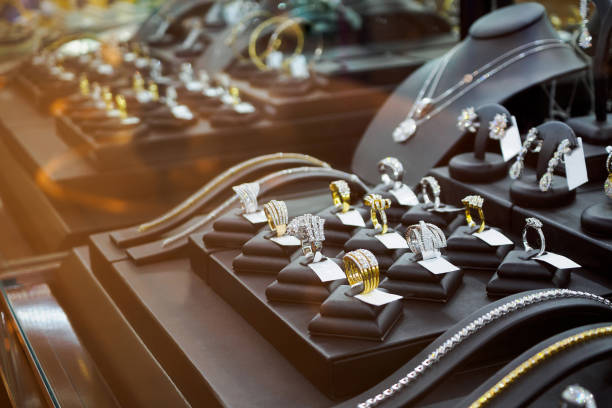The Ultimate Guide to Diamond Ring Stores: Finding the Perfect Symbol of Love
Diamond rings have long been a symbol of love, commitment, and luxury. Whether you're shopping for an engagement ring, a wedding band, or a special gift, choosing the right diamond ring store is crucial. With so many options available—from high-end jewelers to online retailers—it can be overwhelming to decide where to buy. This comprehensive guide will walk you through everything you need to know about diamond ring stores, including what to look for, how to compare options, and tips for getting the best value for your money.
Why Diamond Rings Are Timeless
Diamonds are cherished for their brilliance, durability, and rarity. They represent eternal love, making them the perfect choice for engagements and anniversaries. The tradition of giving diamond engagement rings dates back to the 15th century, but it became widely popular in the 20th century thanks to marketing campaigns by companies like De Beers. Today, diamond rings come in various styles, cuts, and settings, allowing buyers to find a piece that perfectly matches their partner’s personality and taste.
Types of Diamond Ring Stores
When shopping for diamond rings, you’ll encounter different types of stores, each with its own advantages and disadvantages.
1. Brick-and-Mortar Jewelry Stores
These are traditional physical stores where you can see and try on rings in person. Well-known jewelers like Tiffany & Co., Cartier, and local boutique stores fall into this category.
Pros:
Ability to inspect diamonds in person
Personalized customer service
Immediate purchase and sizing adjustments
Cons:
Higher prices due to overhead costs
Limited selection compared to online stores
2. Online Diamond Retailers
Online stores like Blue Nile, James Allen, and Brilliant Earth offer a vast selection of diamonds and settings at competitive prices.
Pros:
Wider variety of diamonds and designs
Often more affordable than physical stores
Detailed product descriptions and high-resolution images
Cons:
Cannot see the diamond in person before buying
Shipping and return policies may vary
3. Custom Jewelers
For a truly unique ring, custom jewelers can create a bespoke piece tailored to your specifications.
Pros:
One-of-a-kind design
Personal involvement in the creation process
High-quality craftsmanship
Cons:
Higher cost and longer production time
Requires clear communication of design preferences
4. Auction Houses and Estate Jewelers
These stores sell vintage and pre-owned diamond rings, often at lower prices than new ones.
Pros:
Unique, antique designs
Potential cost savings
Eco-friendly option (recycled jewelry)
Cons:
Limited availability of specific styles
May require additional appraisal and maintenance
Key Factors to Consider When Choosing a Diamond Ring Store
1. Reputation and Reviews
Before purchasing, research the store’s reputation. Look for customer reviews on platforms like Google, Yelp, and Trustpilot. A reputable store should have positive feedback regarding diamond quality, customer service, and after-sales support.
2. Certification
Always buy diamonds certified by reputable gemological labs such as the Gemological Institute of America (GIA) or the American Gem Society (AGS). Certification ensures the diamond’s quality in terms of cut, color, clarity, and carat weight.
3. Return and Warranty Policies
A trustworthy store should offer a reasonable return policy and warranty. Some stores provide lifetime warranties covering maintenance, resizing, and even diamond replacement in case of damage.
4. Pricing and Payment Options
Compare prices across different stores to ensure you’re getting a fair deal. Some retailers offer financing options or layaway plans, making expensive purchases more manageable.
5. Customer Service
Excellent customer service is crucial, especially for such a significant purchase. The store should be willing to answer all your questions, provide guidance, and offer post-purchase services like cleaning and resizing.
Understanding the 4 Cs of Diamonds
When buying a diamond ring, you’ll often hear about the 4 Cs:
1. Cut
The cut determines the diamond’s brilliance. A well-cut diamond reflects light beautifully, while a poorly cut one may appear dull. Popular cuts include round brilliant, princess, cushion, and emerald.
2. Color
Diamonds are graded on a color scale from D (colorless) to Z (light yellow). The closer to D, the more valuable the diamond.
3. Clarity
Clarity refers to internal imperfections (inclusions) and surface flaws (blemishes). Flawless (FL) diamonds are the rarest, while slightly included (SI) diamonds offer good value.
4. Carat Weight
Carat measures the diamond’s size. Larger diamonds are rarer and more expensive, but cut and clarity also significantly impact appearance.
Popular Diamond Ring Styles
1. Solitaire
A classic single-diamond setting that highlights the stone’s beauty.
2. Halo
A center diamond surrounded by smaller stones, creating extra sparkle.
3. Three-Stone
Symbolizing the past, present, and future, this design features three diamonds.
4. Vintage
Intricate designs inspired by historical jewelry eras like Art Deco or Victorian.
5. Pavé
The band is set with small diamonds for continuous brilliance.
Tips for Buying the Perfect Diamond Ring
Set a Budget – Determine how much you’re willing to spend before shopping.
Know Your Partner’s Style – Pay attention to their jewelry preferences.
Prioritize Cut Over Size – A well-cut diamond sparkles more than a larger, poorly cut one.
Consider Alternative Stones – Moissanite or lab-grown diamonds offer similar beauty at lower costs.
Get an Independent Appraisal – Useful for insurance and verifying quality.

Posting Komentar untuk "The Ultimate Guide to Diamond Ring Stores: Finding the Perfect Symbol of Love"
Posting Komentar